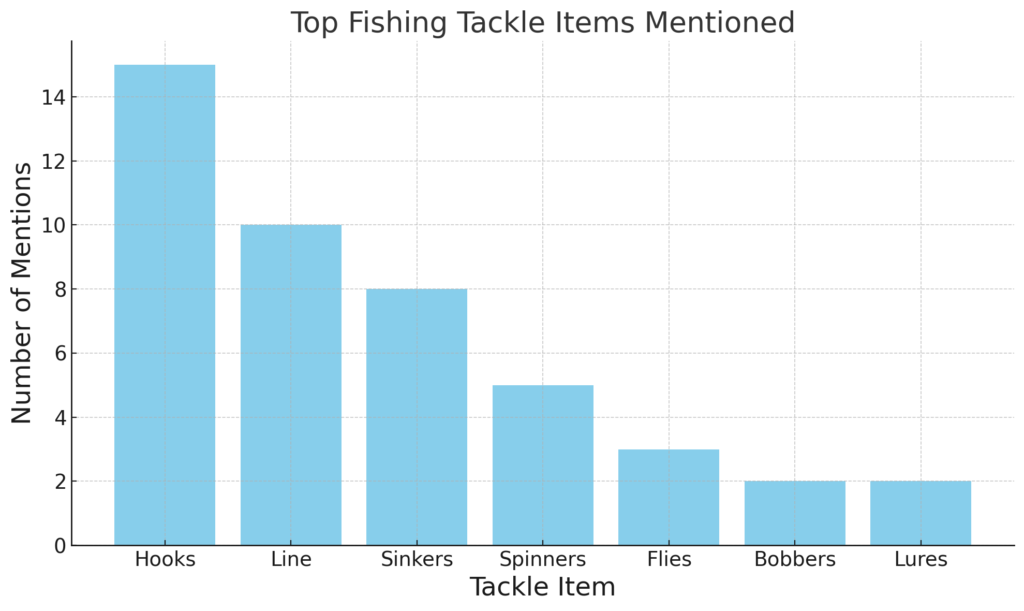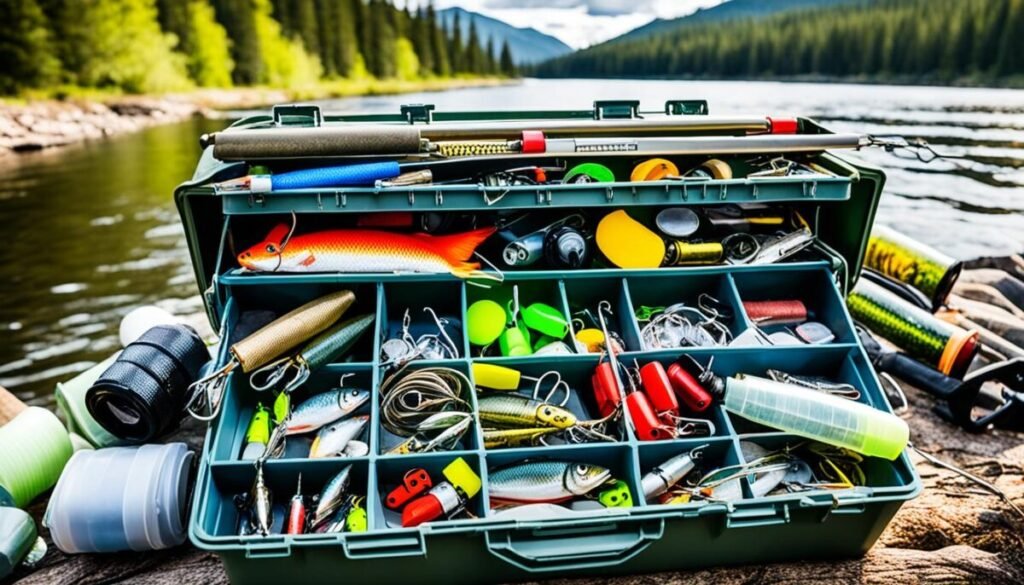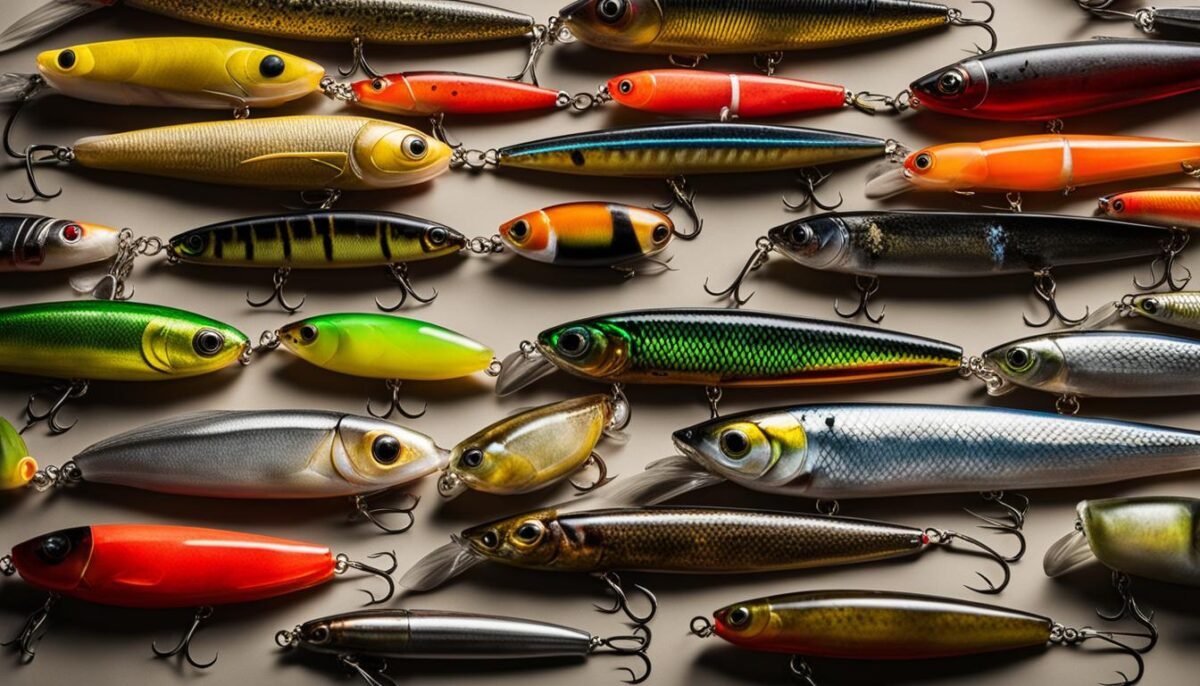As the great survivalist Bear Grylls once said, “Being able to pit your wits, skills, and guts against Mother Nature and then be able to walk out alive is a fantastic feeling.”
Having the right survival fishing equipment can mean the difference between an empty stomach and crucial sustenance.
In this article, we will be looking at what truly matters—simple, reliable, and compact gear that will provide sustenance in time of crisis. This article is your guide into fifteen must-have disaster preparedness fishing gear items.
As an angler, prioritizing essential fishing equipment for survival shouldn’t revolve around the bells and whistles, but rather the compactness, durability, and reliability of your equipment. This is key in your success out in the wild.
Ultimately, the importance of having the right outdoor fishing tools cannot be overstated.
Table of Contents
Reddit Weighs In: “Minimalist & Functional” is the Consensus
A well-rounded prepper always has a backup food source planned for when traditional supply chains are disrupted.
Fishing provides a renewable source of protein that doesn’t depend on grocers or delivery routes.

But not just any fishing gear will do – preppers need the right tackle suited for survival scenarios.
Objective: In this case study, I’ll dive deep into the Reddit prepping community to uncover their recommended must-have items for a portable, minimalist yet highly functional survival fishing kit. We’ll explore lightweight multipurpose options versatile enough to catch fish in any waters.
Background Information
Context: The analyzed threads originated from questions posted in the /r/preppers and /r/Survival subreddits by users looking to refine their bug-out fishing tackle. Hundreds of experienced anglers, bushcrafters, and preppers jumped in to share their insights and personal kits.
Community Profile: The /r/preppers subreddit centers around cultivating skills and stockpiling supplies for self-reliance during emergencies or societal breakdowns. Many members have extensive real-world backcountry and wilderness experience to draw from.
Analysis of Discussion
Key Points: The consensus leaned heavily toward carrying compact, lightweight, multipurpose gear over specialized tackle. Small hooks in assorted sizes, spools of quality line, split shot weights, and basic lures/spinners that can catch multiple species were the top recommendations. Opting for live bait like worms or minnows was overwhelmingly preferred when possible over artificial lures.
Data Visualization:

Insight: For pure survival fishing, contributors agreed that passive methods like traps, trot lines and gill nets are ultimately more efficient and lower effort than actively fishing with a rod and reel. However, the mobility and versatility of basic hooks and line make them an indispensable backup option to include.
Personal Stories and Quotes
Contributor Highlight:
Searching for insects, frogs, grubs and worms near your intended fishing hole will usually yield bait that the fish are used to eating. With this method a variety of hooks and improvised weights is all you need, apart from a collapsible rod.
/u/Earlyfb75
Differing Views: While some argued for carrying only an ultralight minimalist fishing kit, others advocated including a compact rod/reel setup to enable catching larger predatory species like pike, muskie, or bass that are difficult on hand-lines.
Don’t ignore larger fish if you have the gear – they can be worth the calories.
Practical Applications
Recommendations: Synthesizing the overall input from these threads, here are the core components of an ideal survival fishing kit:

Assortment of hooks in sizes 4-8 (100+ quantity)

50-100 yards of quality 6-10 lb test monofilament line

Split shot weights (assorted sizes)

Snare wire or rope for hand-line rigs

Compact collapable rod/pole (optional)
Implementation Tips:

Customize further by adding a few compact lures or spinners proven for your region’s waters and species.

Pack several feet of hi-vis duct tape to improvise bobbers or repair gear.

Always prioritize multipurpose gear – each item should have auxiliary uses.

Use pill bottles or mint tins to organize small components.
Conclusion
Summary: While avid anglers need premium rods, reels and specialized tackle, preppers should build kits centered on portable, resilient, multipurpose fishing essentials. Core items like hooks, line, weights, and snares provide the most versatility. With just those basics and the ability to find live bait, one can fish nearly any waters.
Reflection: The voices from Reddit revealed that triumph often goes to the resourceful improviser, not the hapless gearhead. With some primitive yet reliable fishing tools and the mindset to create solutions, one can overcome lacking preppedefined fishing rigs.
Call to Action: Take these hard-won insights from the /r/preppers community and apply them to build your own compact, lightweight, packable survival fishing kit today. When your future need arrives to drop a line for sustenance, you’ll be geared up and ready.
References
This case study’s findings were drawn from an analysis of these insightful Reddit threads:
I encourage readers to explore the original sources, join the discussions, and contribute their own thoughts on crafting an ideal survival fishing kit.
Now let’s dig into these recommendations and an expanded list of must-have items.
15 Survival Fishing Equipment Must-Haves Unpacked

No matter what outdoor adventure you embark on, it’s essential to be prepared for every situation, especially emergencies. Thus, having a compact fishing kit in your backpack could be a critical lifeline in survival situations. Here, we are unpacking the must-have portable fishing equipment for emergencies to help you navigate through the wilderness like a seasoned angler.
Compact Fishing Rod
A compact fishing rod, whether it’s a coil, spinning, or a collapsible model, is a key component of any wilderness fishing supplies. Easy to transport, these rods offer the functionality of a full-sized rod while saving valuable space in your gear.
Fishing Reel
The fishing reel is the heart of your fishing gear. Essential for casting and retrieving the line, a compact, durable, and reliable reel could mean the difference between landing a fish and returning empty-handed.
Fishing Line
The sturdy fishing line is also part of every survival fishing tackle. Choose one that is robust and capable of withstanding the weight and strength of a variety of fish species.
Hooks
Different-sized hooks are crucial in any fishing kit. Having an assortment means you’re equipped to catch fish of various sizes in different water bodies.
Sinkers/Weights
Sinkers or weights are what get your bait to the depth where the fish are. Ensure you have a variety of these to suit different fishing scenarios.
Bobbers/Floats
Bobbers or floats allow you to track your bait’s position and notify you when a fish bites. They are a must-have in every fishing kit.
Swivels
Swivels keep your line from twisting, making them an indispensable component of your fishing gear.
Lures
An assortment of lures can be quite beneficial for attracting various kinds of fish, expanding your chances of catching food in any given body of water.
Bait
While you can often source bait in the wild, having an immediate supply in your kit can buy you time when you need it most.
Needle Nose Pliers
A set of sturdy needle nose pliers is perfect for removing hooks from your catch and handling close-up tasks where fingers can’t reach.
Line Cutter
A line cutter is an indispensable tool. It helps to repair your line, set your rig, and even prepare your catch.
Fishing Net
A lightweight, retractable fishing net is quite useful for securing your catch once it’s on the line.
Tackle Box
A compact and lightweight tackle box is perfect for storing all your small bits of equipment, such as hooks, lines, lures, and swivels, ensuring you’re always well prepared.
Gloves
Durable fishing gloves that can withstand harsh weather conditions are crucial. They protect your hands from cuts, burns, and punctures, all while providing better grip.
First Aid Kit
Lastly, never forget to pack a basic but comprehensive first aid kit to handle any minor injuries and stay safe in the wilderness.
In conclusion, assembling your compact fishing kit is an exercise in balance—one needs to maintain optimum functionality without compromising on portability. But once you’ve found that balance, you can confidently venture into the wilderness, knowing you’re well-equipped to handle whatever fishing challenges come your way.
| Equipment | Description |
|---|---|
| Compact Fishing Rod | Compact and easily transportable rod for fishing in various water bodies |
| Fishing Reel | An essential component for casting and retrieving the line |
| Fishing Line | Durable line capable of withstanding weight and strength of a variety of fish species |
| Hooks | Assortment of hooks for catching fish of various sizes |
| Sinkers/Weights | Used to get your bait to the depth where the fish are |
| Bobbers/Floats | Allowing you to track your bait’s position and signaling when a fish bites |
| Swivels | Stop your line from twisting |
| Lures | Used to attract a variety of fish species |
| Bait | Immediate supply of bait can buy valuable time in emergencies |
| Needle Nose Pliers | Essential for removing hooks and handling close-up tasks |
| Line Cutter | Key for repairing your line, setting your rig, and preparing your catch |
| Fishing Net | Lightweight, retractable net for securing your catch |
| Tackle Box | Compact box for storing important equipment like hooks, lines, lures, and swivels |
| Gloves | Protects your hands from cuts, providing better grip |
| First Aid Kit | An important kit to handle minor injuries in the wilderness |
Understanding Survival Fishing Equipment Essentials

Acquiring a suitable batch of emergency fishing gear is an art that necessitates an understanding of its core components, each catering to specific needs and environments. We will break down these essentials, pointing out the aspects to consider ensuring the acquisition and use of compact fishing gear for emergencies that is both dependable and versatile.
Choosing the Right Rod: Durability and Compactness
Key to any fishing excursion, survival or otherwise, is a reliable rod. Survival situations demand gear that can bear up under challenging conditions. So, opt for a rod that boasts durability while being compact for easy transport. Research widely to settle on the one that suits your needs, and don’t forget to test out its robustness and ease of use.
Essential Fishing Line Types for Different Environments
The fishing line is another critical part of your durable fishing gear for survival situations. It’s crucial to select a line that corresponds with the environment you find yourself in. For example, braided lines demonstrate high resistance to abrasion, making them suitable for fishing around sharp rocks or debris. Monofilament lines, on the other hand, have excellent knot strength and stretch, suitable for a wide range of fishing conditions.
The Significance of Reliable Hooks and Tackle
Investing in reliable hooks and tackle is another vital step in prepping for survival situations. Get your hands on various sizes to be able to secure different types of fish. Remember, survival situations present unique challenges, thus the need for gear that is not merely adaptable, but also easy to carry and capable of lasting. This underscores the importance of quality and practicality over aesthetics or sport-specific features.
Compact Fishing Gear for Emergencies
When every inch of space and ounce of weight counts, your survival can hinge on smart packing. For this, look no further than having a well-organized emergency fishing kit filled with portable angling essentials. Such a kit should contain all you need for a successful fishing endeavor while being compact enough to fit in your bug out bag or survival pack.
Portable Angling Essentials: What to Pack
A well-stocked survival kit should contain a combination of compact fishing gear that can perform under varying terrains and circumstances. Item selection should be strategic, prioritizing tools that effectively multitask and consolidate gear without adding unnecessary weight or bulk.
Here are some of the essentials no portable angling kit should be without:
- Collapsible fishing rod and compact reel
- A variety of hooks, baits, and lures
- Pre-tied rigs for quick assembly
- Durable fishing line
- A multi-tool that includes fishing pliers and line cutters
- Emergency fishing guide for useful tips and techniques
Space-Saving Tips for Your Emergency Fishing Kit
Aside from carefully choosing your fishing essentials, effective packing is paramount to ensure all necessary gear fits into your carry kit. Here are some space-saving tips:
- Compression: Utilize compact and compressible gear that can be shrunk in size when not in use. Consider collapsible fishing rods and reels.
- Strategic Packing: Nest smaller items within larger ones or in any available nooks and crannies.
- Multipurpose Tools: Invest in tools that can serve multiple functions. A multi-tool with fishing specific attachments can replace several individual gear pieces.
- Decant Baits and Line: Rather than carrying full spools of line and large bait boxes, take the sufficient quantity that fits into smaller containers.
Equipped with the right portable angling essentials in a smartly packed emergency fishing kit, you can confidently step into the wild, ready to procure your meal from nature’s water bodies, no matter the circumstances.
Survival Fishing Equipment: Reliable Kits for Any Situation
A survival situation may come without warning, be it a sudden extreme weather event, getting lost on a trip, or facing an unforeseen disaster. In such cases, having essential fishing equipment for survival is key to enduring and thriving. Renowned for its quality and compactness, survival fishing equipment offers a reliable solution to procure food when resources are scarce.
Certain survival fishing kits have gained recognition for their reliability and convenience. Kits like Uncle Flint’s Survival Fishing Kit, the TRS Survival Fishing Kit, and the Best Glide ASE Survival Fishing Kit offer a dependable array of emergency fishing gear tailored for unexpected survival situations.
| Kit | Items Included | Features |
|---|---|---|
| Uncle Flint’s Survival Fishing Kit | Pole, Reel, Hooks, Lines, Sinkers, Swivels, Bobbers, Bait, Pliers | Small but mighty, Uncle Flint’s kit offers a flexible fishing rod, resilient line, diverse hook sizes, and necessary tools, all packed in a compact case. |
| TRS Survival Fishing Kit | Pole, Reel, Hooks, Lines, Sinkers, Bait, Multi-tools | A robust option, the TRS kit encloses an array of equipment, including a durable rod, effective hooks, and practical multi-tools, readied for any situation. |
| Best Glide ASE Survival Fishing Kit | Pole, Reel, Hooks, Lines, Sinkers, Swivels, Bobbers, Bait, Multi-tools | Proven to withstand challenging conditions, Best Glide ASE’s kit ensures easy handling with its lightweight pole, reliable reel, and a variety of tackle, making survival fishing manageable even for beginners. |
While pre-assembled kits offer convenience, there’s an undeniable appeal to assembling your own emergency fishing kit. It allows customization based on personal preferences and anticipated fishing conditions, ensuring that you’re fully prepared for any eventuality.
Meticulous understanding and selection of your survival fishing equipment can be the difference between sailing through a crisis or getting swamped in it.
The journey of unpredictable survival can be somewhat tamed with an ally like the right set of survival fishing equipment. It’s your ticket to adapt, survive, and eventually triumph over the hand that nature deals you.
Survival Fishing Rods: Balancing Portability and Functionality
Selecting the ideal survival fishing rod entails a balance between ease of transport and effective functionality. A key facet to consider in survival situations is the portability of your fishing gear. Far too often, this aspect is overlooked in favor of features that, although impressive in a leisurely fishing context, may prove cumbersome and impractical in a survival scenario.
Survival fishing rods, specifically designed with these circumstances in mind, offer an effective and pragmatic solution. Coil and spinning rods are examples of this functional minimalism, crafted to be lightweight, space-efficient, and easily compressed for storage in backpacks or survival kits. Such rods don’t compromise on durability, a vital trait when facing the unpredictable conditions in survival situations.
Moreover, compact fishing gear for emergencies such as portable rods and reels present an alternative to traditional, often bulky, fishing gear. They offer the much-needed flexibility to fish successfully in diverse locations, from streams in dense forests to secluded mountain lakes. This adaptability proves critical in survival situations where the environment and resources may vary tremendously.
In essence, survival fishing rods and compact fishing gear cater to those often on the move, out in the wild seeking sustenance, without the burden of heavy or unwieldy equipment. They are designed for resilience, functionality, and most importantly, to keep you alive and fed in a survival situation.
Below is a comparison table of some popular survival fishing rods, highlighting their features and the situations they are best suited for:
| Survival Fishing Rod | Type of Rod | Best For |
|---|---|---|
| Shakespeare Ugly Stik GX2 Spinning Rod | Spinning Rod | Superior Durability, Ideal for Fresh and Saltwater Fishing |
| Tailored Tackle Universal Multispecies Rod and Reel | Multi-Species Rod | Versatility, Suitable for Various Fish Species |
| Okuma Cedros CJR Fishing Rod | Coil Rod | Lightweight Design, Perfect for Long-term Trekking |
| Telescopic Fishing Rod by Plusinno | Telescopic Rod | Impeccable Portability, Easy to Setup |
In conclusion, choosing the right survival fishing rod goes beyond just regular fishing considerations. The key is finding a balance between the rod’s portability and its functionality, ensuring a versatile and reliable companion in a survival situation. Investing in highly portable, durable fishing gear designed for survival situations may spell the difference between peril and preparedness in emergent scenarios.
Durable Fishing Gear for Survival Situations
Surviving in wilderness situations often depends on the durability of your fishing gear. While there’s no denying the importance of skill and knowledge, having reliable equipment is equally critical. From hooks to lines and reels, the best survival kits are those made from high-quality materials and constructed to withstand harsh conditions. Furthermore, optimal maintenance of gear not only prolongs its lifespan but also ensures its effective operation when you need it the most.
Materials and Construction: What Lasts in the Wild
Survival gear’s ability to endure adverse conditions largely depends on the materials used in its construction. Stainless steel and anodized aluminum are excellent for resistive corrosion, while high-grade lines and hooks designed to withstand sharp teeth, strong bites, and extreme underwater pressures. Consider the fabric of your fishing bag, too. Look for materials like heavy-duty nylon that are tear and water-resistant, helping keep your kit safe and dry.
Maintenance Tips to Prolong Equipment Life
Maintenance is a critical practice that ensures the durability of your outdoor fishing tools. Proper cleaning, drying, and occasional repairs are key to prolonging their utility and reliability. Regularly inspect your gear for signs of wear or damage, particularly before and after each use.
- Cleaning: Remove any visible debris and thoroughly wash all parts using warm water and a mild detergent. Be sure to rinse them properly to prevent soap buildup.
- Drying: Allow your equipment to air dry completely before storing it. This step is crucial in preventing rust and mold growth.
- Repairing: Regularly check your gear for any minor damages. Small repairs, if done in time, can prevent more significant issues in the future. Always carry a small repair kit with you for any emergent needs.
- Sharpening: Ensure your knives are always sharp. Dull blades can make you exert extra effort, which isn’t advisable in a survival situation.
Remember, your survival can hinge on the readiness of your fishing gear. As such, the time and effort spent on maintenance are minimal compared to the potential benefits.
Emergency Fishing Gear: Tackling Unpredictable Challenges
In moments of crisis, fishing can offer valuable calories, demanding gear that is robust and adaptable. Ensuring the right selection of emergency fishing gear is crucial, especially in scenarios where you may need to adapt to diverse water conditions and fish types. Let’s delve into how to tailor your fishing setup to meet these continually changing circumstances and deal effectively with unexpected challenges.
Adapting to Water Conditions with the Right Equipment
Adaptability is a prized attribute in any survival fishing equipment. Consideration must be giving to selecting lines and hooks that are suitable for the variety of water conditions and fish types you might encounter. Line strength should be ample for the size and strength of the local fish; a mismatch here could see a potential meal slip away. Your hooks should be sufficiently small to be appealing to fish yet strong enough to secure them. This level of preparedness could potentially significantly enhance your chances of securing food in a survival situation.
Emergency Fishing Techniques without Traditional Tools
Survival scenarios often demand resourcefulness, especially when traditional fishing tools are not at hand. Discovering improvised or “bushcraft” fishing techniques could prove significant in such moments. Relying on natural resources, one can carve makeshift fishing rods from sturdy branches, fashion hooks from thorns or bones, or even weave a net from vines. Such emergency fishing techniques not only challenge your ingenuity but also might prove life-saving when manufactured gear is unavailable or compromised.
Building Your Own Survival Fishing Tackle
While pre-made kits serve well, building your own survival fishing tackle allows for a personalized approach, ensuring that every piece of equipment suits your skills and environment. But where do we start? By sticking to the basics – line, hooks, and weights. These are the core elements of any fishing tackle, whether for leisure or survival situations.
- Line: Braided lines are recommended for their strength and durability.
- Hooks: A variety of sizes are useful to target different species of fish. Circle hooks are advised for their ability to set themselves.
- Weights: Split shots or improvised weights can be used to add necessary depth to your bait.
From these foundations, we can start to get creative. Whether using improvised bobbers from natural materials or crafting handmade lures, these additions can enhance effectiveness whilst also reflecting the unique nature of customizing emergency fishing kits.
One might ask, why would we go through all this trouble when easily accessible pre-assembled kits are just a click away? The answer lies in knowledge and familiarity with the tools we use. Creating DIY survival fishing gear equips survivalists with a deeper connection and understanding of their tools, fostering ingenuity and resourcefulness in emergent situations. And that’s something any pre-made kit can’t offer.
The more you know, the less you have to carry. The less you know, the more you have to carry. – Mors Kochanski, Wilderness Skills Instructor
Remember that the most important skills in survival fishing are adaptability, resourcefulness and intimate knowledge of your tools and environments. So, go ahead, start building your survival fishing tackle and practice using it on your next wilderness adventure.
Conclusion
The journey of exploring survival fishing equipment clearly demonstrates its significant role as an indispensable part of any disaster preparedness strategy. Be it a predesigned kit, like Uncle Flint’s Survival Fishing Kit, or a custom-made one, the value of having a dependable set of tools cannot be overstated. These tools not only possess the potential to make a crucial difference in survival situations but also offer some peace of mind to the intrepid survivalist.
The emphasis on the situational appropriateness of the equipment is particularly noteworthy. There is hardly a need for exorbitantly priced or overly specialized gear. Instead, items that are compact, durable, and suitable for the environment one expects to face make the best fit for an emergency fishing kit. The potency of a basic rod and line can never be underestimated, nor can the resourcefulness of a well-stocked tackle box.
To conclude, the portable fishing equipment for emergencies lie at the intersection of effectiveness and efficiency, guiding the survivalist successfully amid the unpredictability of nature. The right equipment not only significantly elevates the chances of success but also instills confidence in one’s ability to “ride the tide”. Hence, in the face of adversity, it is comforting to know that you are well-equipped to address the challenge of survival fishing.


